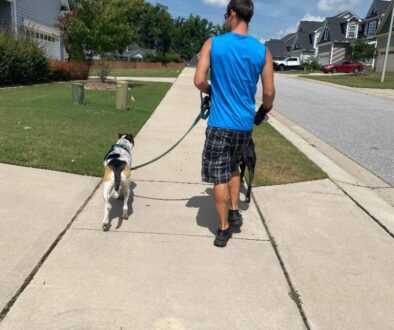Dogs & Hypothyroidism: What Owners Should Know
What is hypothyroidism, and how do you diagnose your dog? Hypothyroidism occurs when the thyroid gland doesn’t produce enough hormones. While easy to diagnose and treat, it can be overlooked without regular vet checkups. The cause remains unclear; however, with some vigilance and care, you can manage this with your dog.
The thyroid gland, like in humans, is butterfly-shaped and found in the neck next to the windpipe. It’s part of the endocrine system, and the hormones it produces make cells function normally through metabolism. Simply put, metabolism refers to how fast or slow cells burn food so cells turn it into energy. From there, it enables your dog’s body to circulate blood, contract muscles, breathe, and ensures their nerves and brain function properly.
Symptoms. Most commonly, this affects dogs between four and ten years of age and can be related to autoimmune disorders which shrink or inflame the thyroid tissue. Hypothyroidism will affect major parts of their body, from gastrointestinal to nervous and circulatory systems and possibly the reproductive system as well.
Look for these signals:
► Excessive tiredness, dullness, or depression
► Abrupt weight gain
► Infections of the skin
► Seizures
► Intolerance to cold
► Excessive shedding, dandruff, or a dull coat
► Uncharacteristically-long heat cycles for unspayed females
► Weakness or neuromuscular problems
► Stiff walking
► Loud breathing
Risk factors. Although there don’t appear to be any genetic causes, some larger breeds tend to be more likely to contract hypothyroidism. Spaying and neutering have many benefits, but one small drawback is this seems to slightly increase the risk of developing this disease.
Treatment options. With proper treatment, your dog will return to their normal energy level and personality! An inexpensive oral supplement will mimic the effect of the gland, but it’s imperative to balance the amount. And then follow up with proper nutrition.




